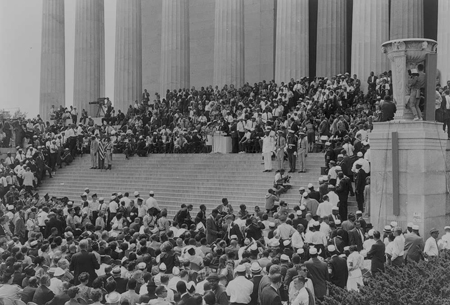Learning from the Source: I Have a Dream Image Sequencing

On August 28, 1963 a march organized by supporters of stronger civil rights legislation drew more than 250,000 people to Washington, D.C. Encouraged and inspired, Martin Luther King, Jr. strayed from the short speech he had prepared and delivered instead his famous extemporaneous I Have a Dream speech from the steps of the Lincoln Memorial. Primary sources can help students better understand the power and significance of this historic speech. In addition to having students complete an image sequencing activity with select lines from King’s speech, you may also wish to have students listen to the speech and read the transcript (from American Rhetoric) or watch a video (from PBS; King’s speech follows a speech by A. Philip Randolph).
Activity materials
- I Have a Dream Image Sequencing Worksheet
- I Have a Dream Image Sequencing – Citations
- I Have a Dream Image Sequencing – Images
Image sequencing resources & activities
- About image sequencing activities
- Gettysburg Address Image Sequencing
- Pledge of Allegiance Image Sequencing
- Preamble to the Constitution Image Sequencing
Related resources
- Today in History: Martin Luther King, Jr.
- Primary Source Spotlight: A. Philip Randolph
- Primary Source Spotlight: Civil Rights primary source collections & teaching resources
